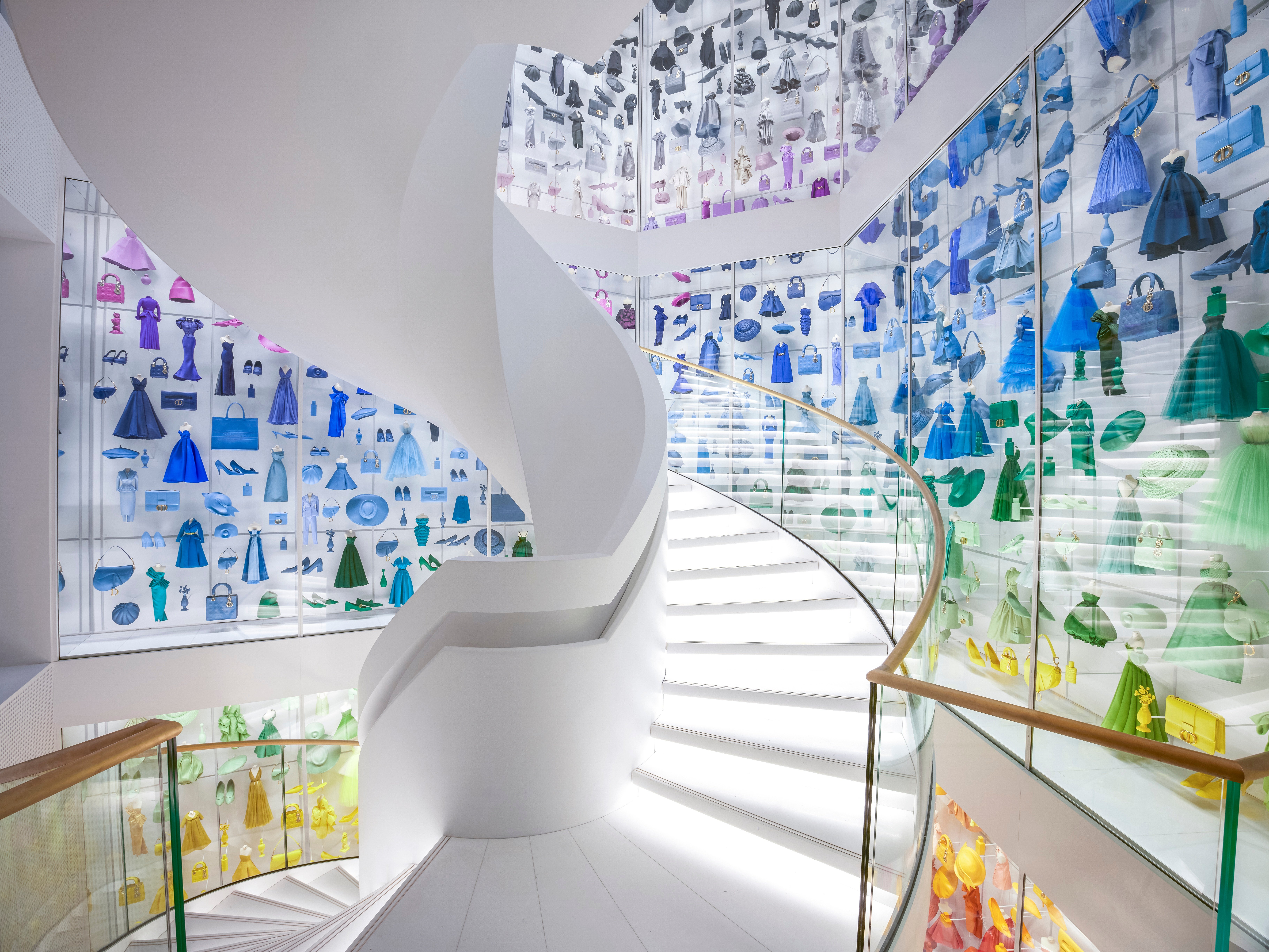
After an extensive two-year renovation, Dior has reopened its hallowed 30 Avenue Montaigne flagship in Paris. Built in 1865 by the son of Napoleon I, the 8th-arrondissement hôtel particulier has been synonymous with the brand since its December 1946 inception; the very next month, the namesake couturier reinvented postwar fashion with the “New Look.”
Overseen by fashion’s go-to architect Peter Marino, who has collaborated with the house for more than 25 years, the revamped 10,000 square-meter space is a veritable Dior ecosphere. In addition to its women’s and men’s boutiques, the space encompasses the atelier, the haute couture salons, three gardens, a restaurant, a patisserie, and a private apartment for VIP clients. But the crown jewel is the 13-room Galerie Dior, accessible through a separate entrance.
La Galerie Dior, inside the house’s newly redesigned Paris flagship. Photo: Kristen Pelou.
Art runs deep within the house’s origins and codes—in fact, before embarking upon a career in fashion, Christian Dior was a gallerist. He co-founded Paris’s Galerie Jacques Bonjean in 1928, and from 1931 he was affiliated with Galerie Pierre Colle, which held two Salvador Dalí shows—it was the first space to exhibit his painting The Persistence of Memory—while also showing artists such as Picasso, Man Ray, Joan Miró, and Max Ernst.
The blockbuster retrospective “Christian Dior: Designer of Dreams” recently concluded its stint at the Brooklyn Museum after stopping in London, Shanghai, and Paris. But there is still an excess of subject matter to curate, from the sublime and slightly bonkers John Galiano–era fantasias (see spring 2003’s Egyptian-inspired couture; fall 2004’s chic delirium) to Raf Simon’s brief, floral-heavy tenure to the first female creative director Maria Grazia Chiuri and her staider current reign.
Such excess can be found in all its glory at La Galerie Dior, which is dedicated to the house, its history, its founder, and his six successors. Nathalie Criniere designed the retrospective’s scenographic narratives as well as those in the current gallery set-up. “This is a fashion house with a past, present, and future,” she said in a video from the brand. “The beautiful thing about writing a story is seeing it evolve, just like life.”
Fear not, the iconic black iron balustrade staircase that served as the setting for so many iconic shows is still intact (as is Dior’s original office). The gallery riffs upon the original staircase with a new, gleaming white one that spirals up through a rainbow “colorama” of miniature dresses and accessories, like a twister that transports you to Dior’s version of Oz.
Photo: Kristen Pelou.
Photo: Kristen Pelou.
Photo: Kristen Pelou.
Photo: Kristen Pelou.